Yùqú Temple (玉渠宮) is a colourful temple in the back alleys of Lukang, one of the oldest and most traditional cities in Taiwan. Tracing its origins back to a simple shrine built in 1765, this small temple venerates Marshal Tian Du (田都元帥), the god of drama—and by extension traditional opera, theater, music, and other forms of performance art. Local gentry funded the construction of the first temple on this particular site in the twilight of Lukang’s commercial importance in 1902, during the Japanese colonial era. The temple underwent major renovations in 1967 and, in typical Taiwanese style, has been regularly improved and updated over the years.
Tian Du is widely regarded to be the deification of a real historical figure, Léi Hǎiqīng (雷海青), a famous Hokkien musician who regularly entertained the court of Emperor Xuánzōng (唐玄宗) of the Táng Dynasty prior to being martyred in the An Lushan Rebellion (安史之亂). At birth he was abandoned by his biological parents in a rice paddy (tián 田, hence the name), apparently for having an inauspiciously dark skin tone, and saved by mitten crabs and a flock of ducks, who nurtured him before he was found by his adoptive parents. He grew up in the countryside where his constant companions were dogs and roosters—which should explain the unusual door guardians at this temple. His followers typically abstain from eating crab or duck—and depictions of Tian Du typically feature a crab on his forehead or around his mouth.
The walls and wooden crossbeams of Yuqu Temple are decorated with all sorts of scenes out of Chinese antiquity that are far beyond my present understanding. Now that I’ve done some reading about Tian Du I realize that one large mural (visible on this page) depicts his origin story but I don’t know about most of the rest. There are, however, several paintings that will be familiar to most westerners with an eye for detail.
Lukang, like most of Taiwan outside of Taipei, is not a place frequented by western tourists, and I regularly attract attention from local people when stopping to take a look around temples like this one. Taiwanese people are generally very proud of their temples and welcoming of outsiders so it isn’t uncommon for some old person to strike up a conversation and make smalltalk, after a fashion. The first time I visited Yuqu Temple by day an old woman came over to chat. She spoke Taiwanese, not a language I have even basic proficiency in, but we were able to communicate well enough through gestures and body language. With a knowing smile on her face she drew my attention to the wooden beams near the ceiling, and here I noticed something very surprising!
Hidden near the top of the gateway to the temple one will find several modern cartoon characters: Patrick Star, Mr. Krabs, Squidward Tentacles, the eponymous SpongeBob from SpongeBob Squarepants; the popular Japanese character Doraemon; and a nod to a classic version of Mickey Mouse. These modern manifestations of drama were added to arouse the interest of a new generation of Taiwanese. And to be clear: this is not common, and you’d be hard-pressed to find any other temples in Taiwan where contemporary cartoon characters have been blended so sublimely with more classical work1.
I returned to Yuqu Temple not long after my first visit to capture several more photos. This time around there was a young family taking a look around the temple, evidently tourists themselves. They did not seem to know about this temple’s quirky artwork—so it was with some amusement that I stepped into the role of unusually knowledgeable foreigner to introduce this Taiwanese family to some obscure aspect of their own culture. When their young boy noticed the foreigner in their midst and turned to awkwardly stare at me I smiled and pointed at the the ceiling beams in a little drama of my own.
I returned to Yuqu Temple in July 2016 and again in November 2017 armed with more knowledge and understanding of what to more closely examine. Recently I learned that almost every temple in Taiwan has a hidden tiger god located beneath the altar of Tǔ Dì Gōng (土地公), the god of land, or another martial deity like Tian Du. Sure enough, an oddly hypnotic tiger general with human-like eyes can be found beneath the main altar at Yuqu Temple. The reason for the placement is simple: it represents how a god might ride the tiger around, patrolling nearby lands or charging into battle. This configuration makes for challenging photographs, as there typically isn’t a lot of room hunched down beneath a table full of idols, flowers, offering plates, and other accoutrements common to Taiwanese temples, but I did my best!
One additional surprise was in store for me on my third visit to Yuqu Temple2. Immediately across from the entrance of the temple I noticed a bamboo pole (qīngzhúfú 青竹符) inked with ornately-drawn characters. Below was a stack of joss paper with five paper horses (zhǐbīngmǎ 紙兵馬) arranged on top. This is related to a Taiwanese folk belief known as the Five Garrisons or Five Cardinal Armies (Wǔyíng Shénjiāng 五營神將), which correspond to north (black), east (green), south (red), west (white), and the center (yellow). Each martial deity commands a spectral army represented, in this case, by those paper horses, and defends the territory within the bamboo boundary markers from harm. For more about this custom try these links here and here (warning: sound will play).
For more about Marshal Tian Du I highly recommend having a look at this great English language photo essay from a temple event in Kaohsiung. For more about Yuqu Temple in Chinese try these links here, here, here, here, here, and here, or try watching this television news report.
- I can think of one other temple where you’ll find subtle references to another set of modern cartoon characters—and it’s in Taipei. Anyone know the one I’m alluding to? ↩
- Yuqu Temple is also one of Lukang’s many shrines originally built for immigrant populations from specific parts of China (角頭廟, Hokkien: gak-tau). Read more about this (in Chinese, of course) here and here. ↩
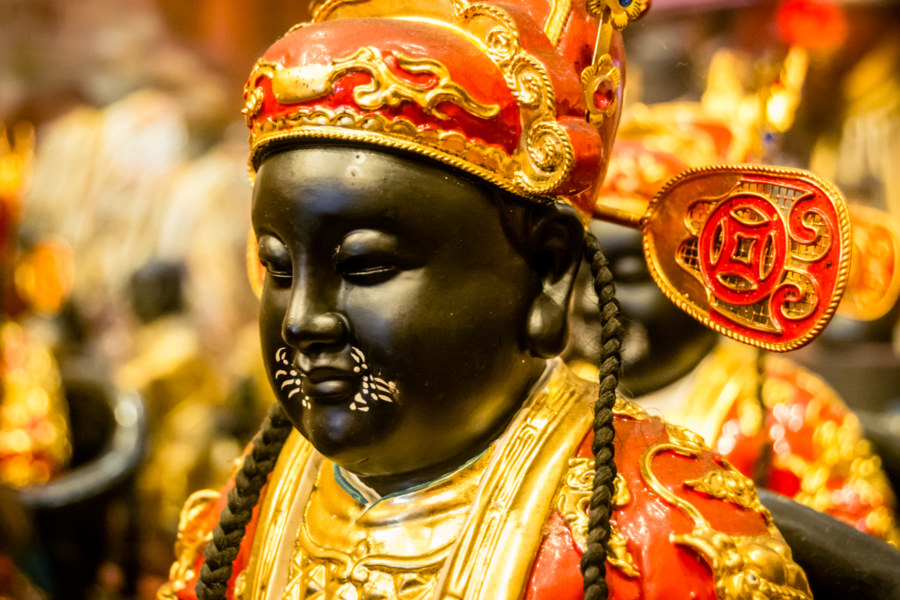
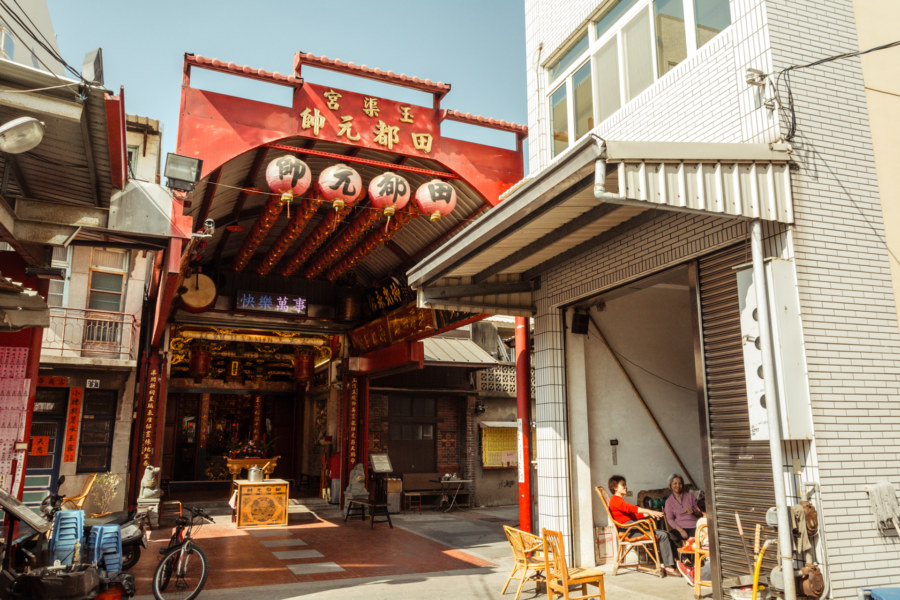
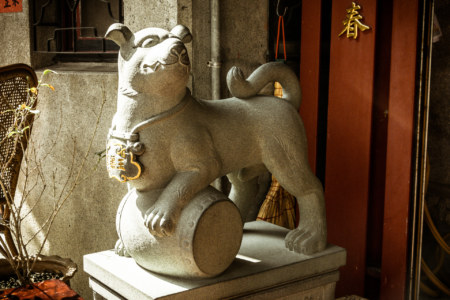
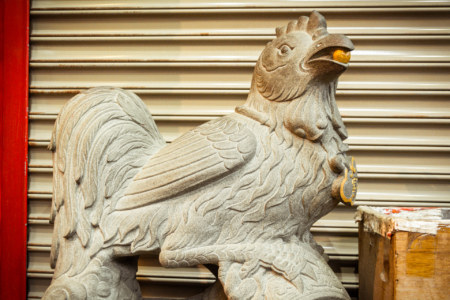
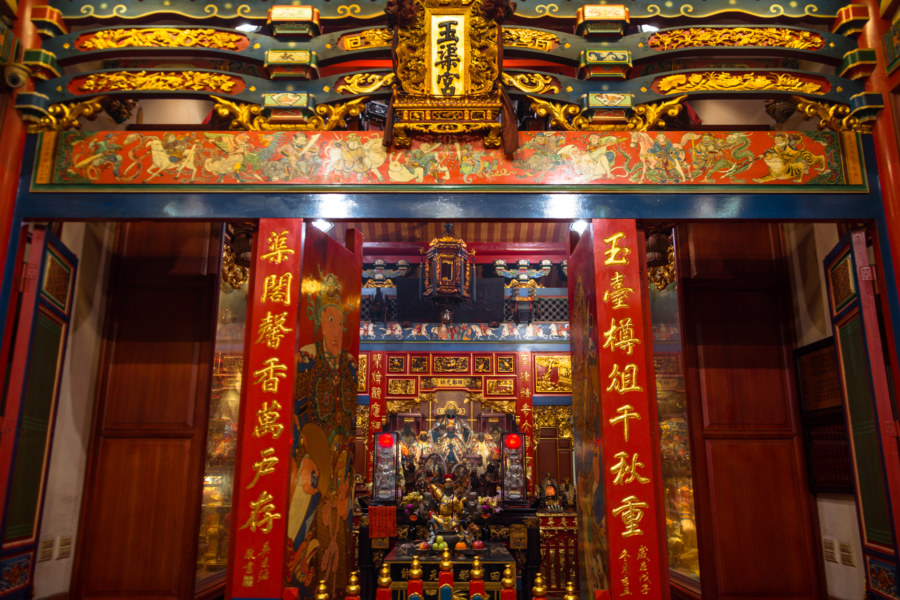
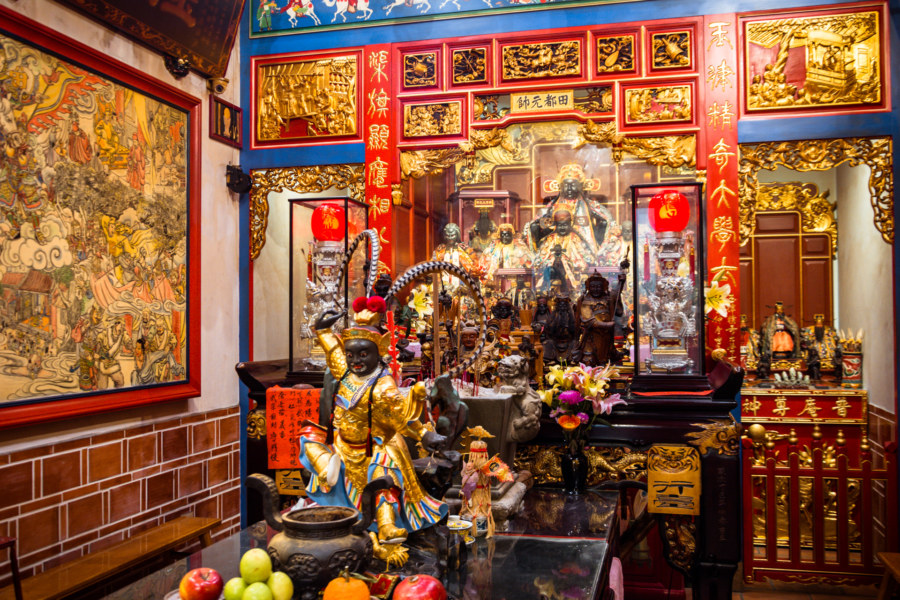
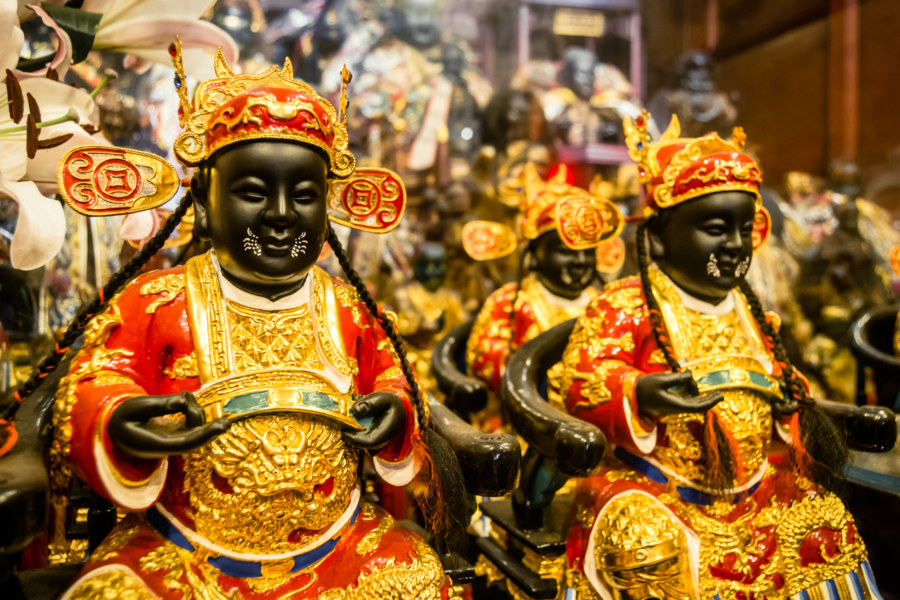
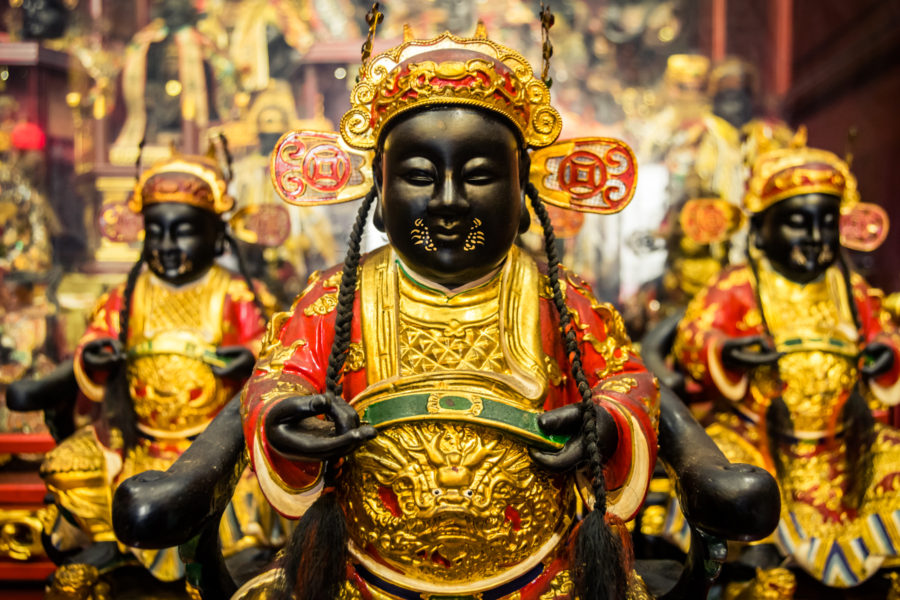
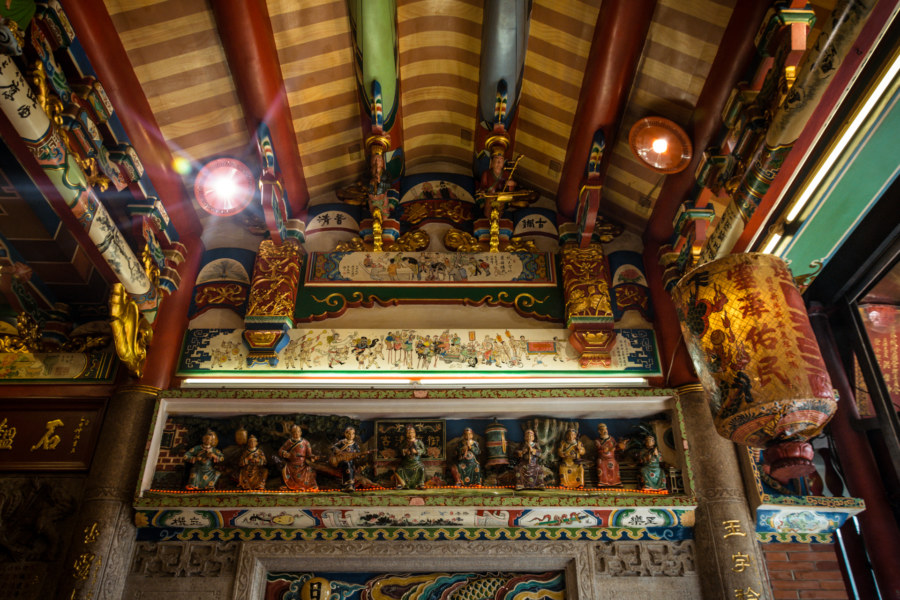
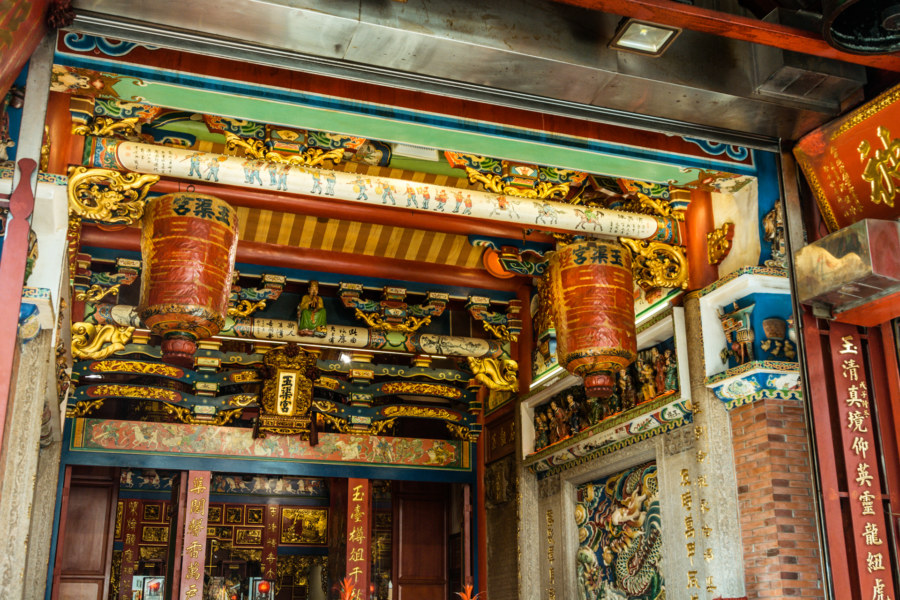
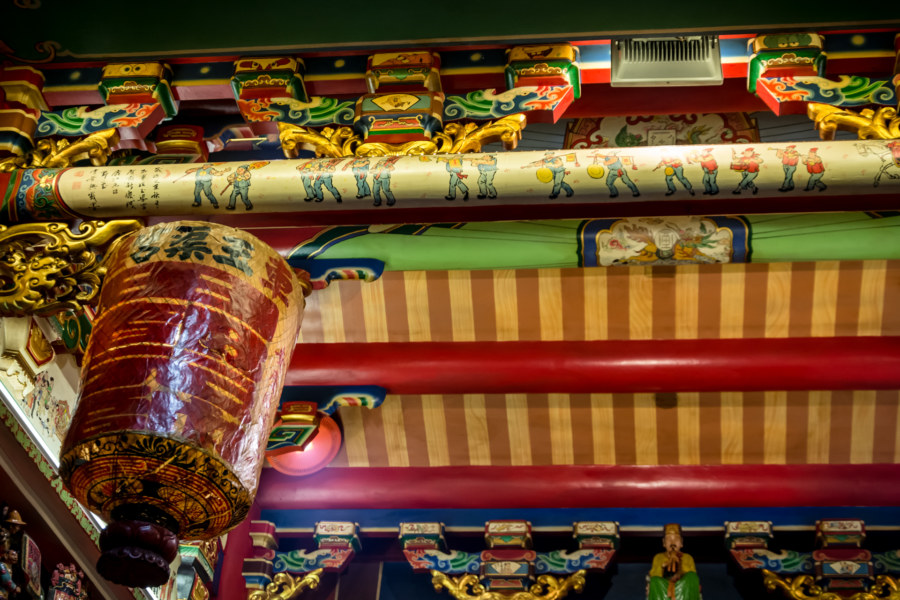
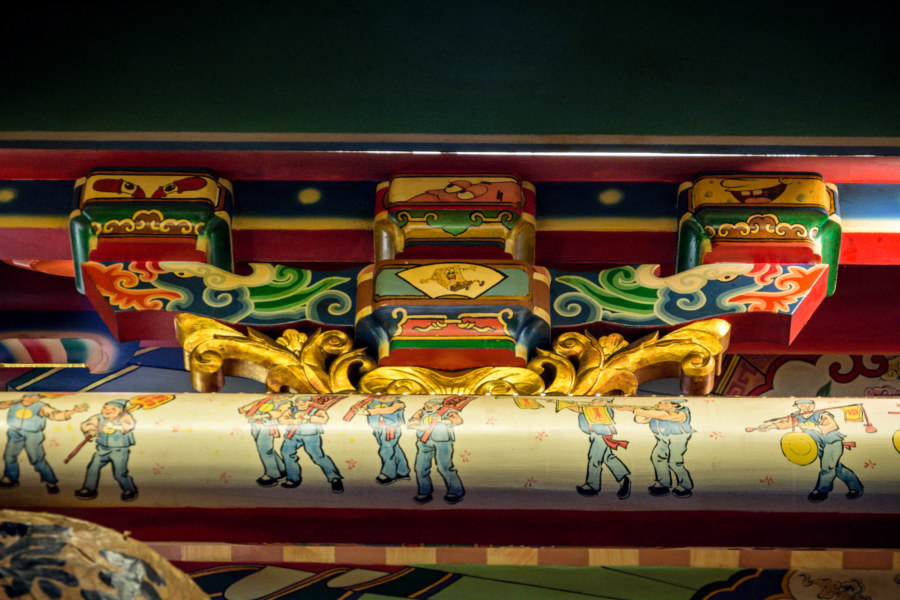
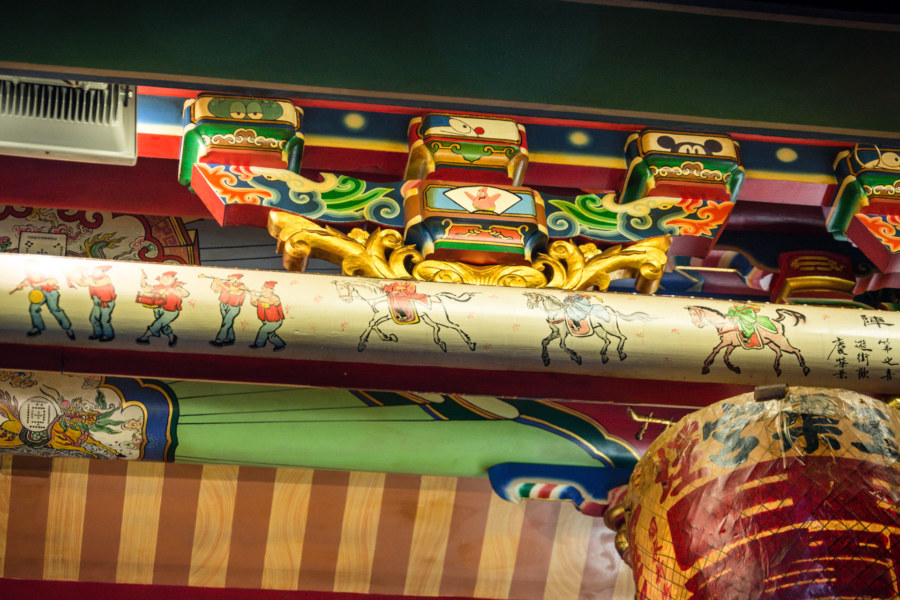
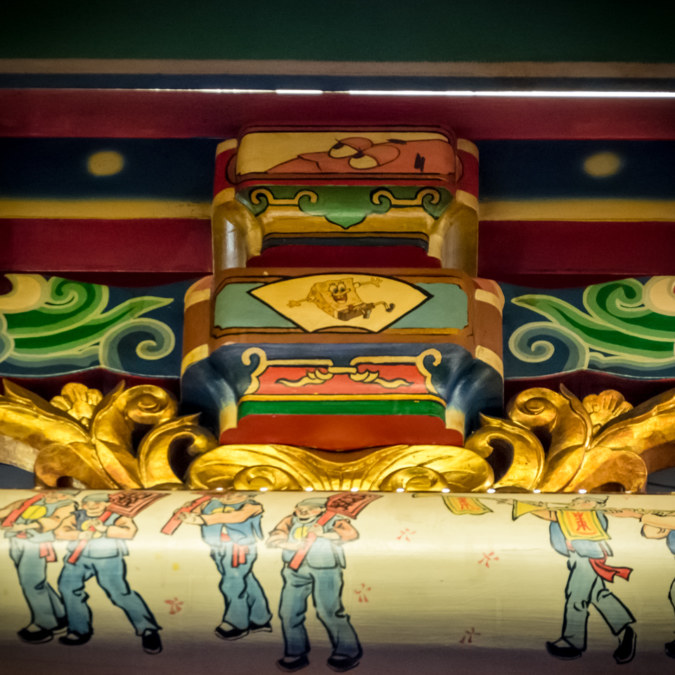
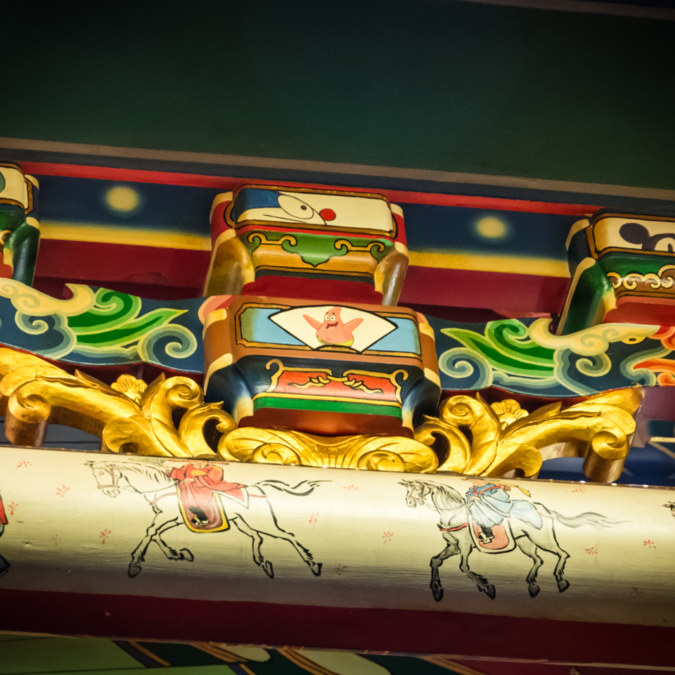
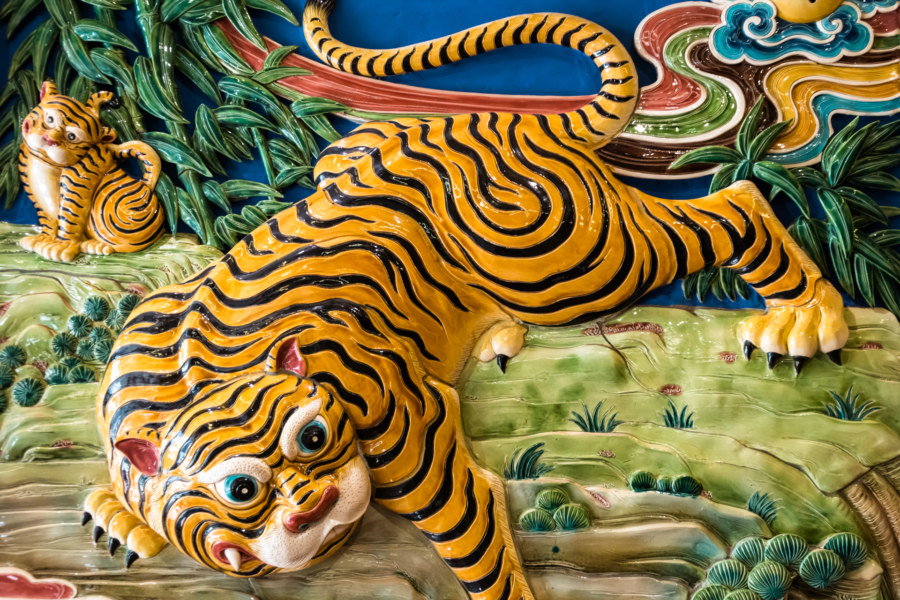
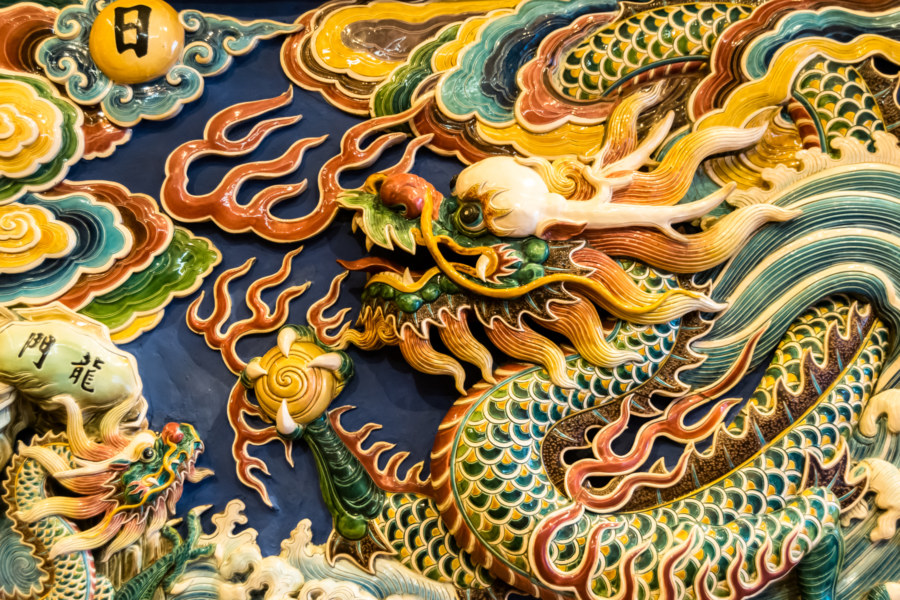
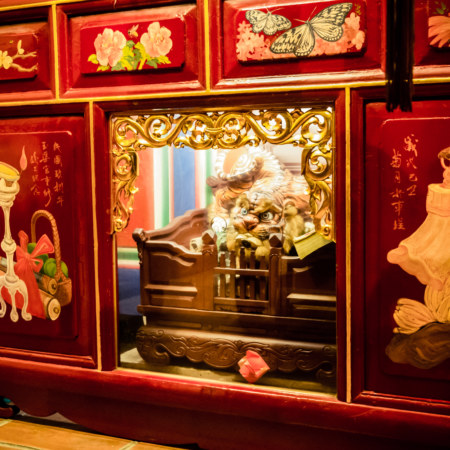
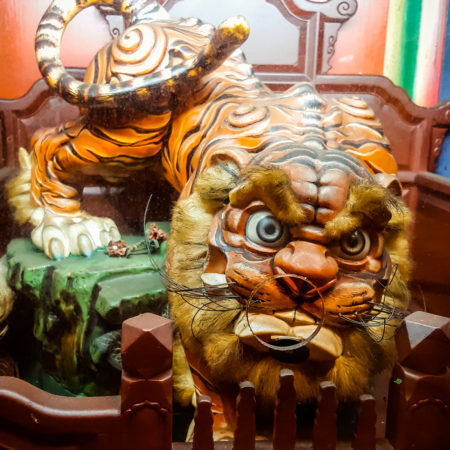
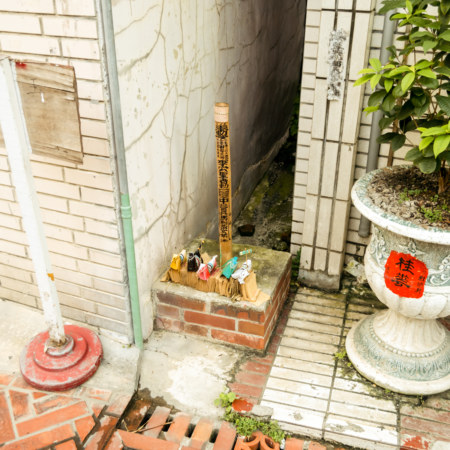
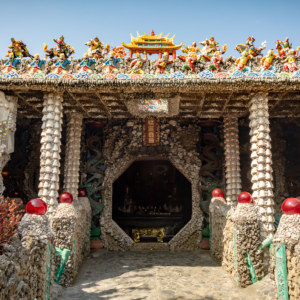
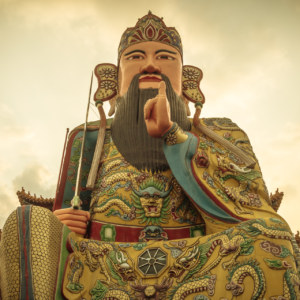
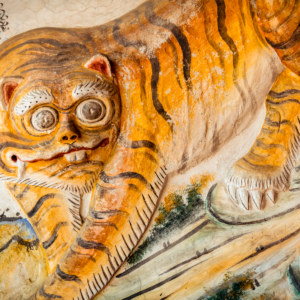
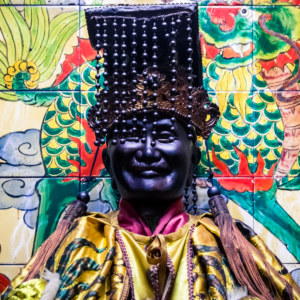
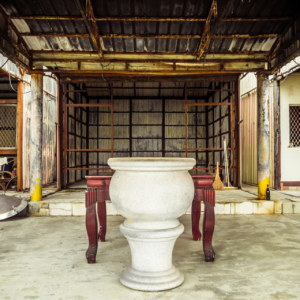
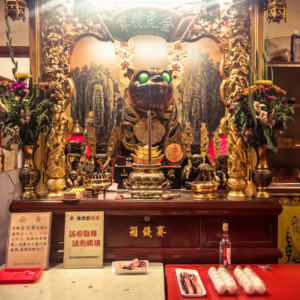
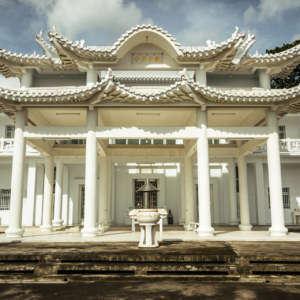

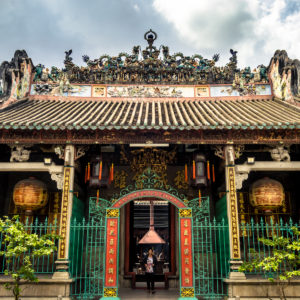
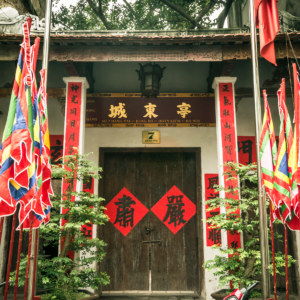
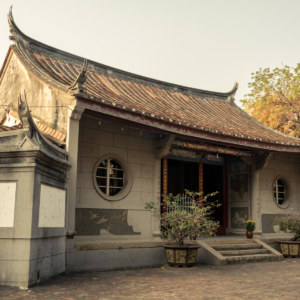
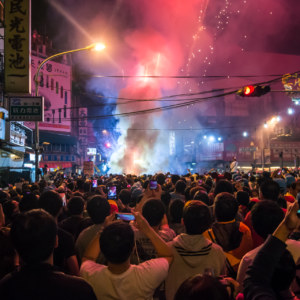
I am not Asian but I have always felt at home with Chinese culture and people. What a beautiful temple. Thank you for posting the photos. When I saw the “back alley” photo I could almost smell the combined smells of food from street vendors and temple incense!